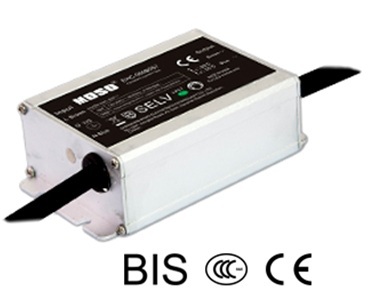Why is there such a "bias"? The fact is that most people's homes have their own sound system that has a special tendency to one side because of equipment collocation and space factors. This feature can actually be called "biased". What is the result of "bias"? Some CD recordings are just right for this kind of "bias", while others are not. If you are suitable, you will think it is a better recording. If you are not, you will certainly think that the recording is not good. In general, the more "biased" the sound system is, the more CDs you feel when you listen to music, and most CDs will feel that the recording is not good and unacceptable. And the less "biased" the sound system, the wider the acceptable recording effect.
Maybe you will ask the question, does it mean that all recordings are good because there is no "bias"? Do not! There is a general standard for the quality of the recording effect. It will not become a good recording because there is no "bias". What I want to say is that the more there is no "biased" audio system, the more it is generally acceptable for the recording effect of various CDs, and it will not feel inaudible. But if you want to seriously judge whether the recording is good or bad, there is still a difference. Of course, a good recording effect is always a relatively small number of parties. Bias makes people think that only I am right, and the rest are wrong.
Once the sound system is "biased", what harm will it do? First, because of the "bias" of our own sound system, we are often blinded without knowing it, and it is easy to fall into the trap of adjusting the sound towards the tip of the horn. Second; also because of "bias", we tend to have a tendency to tend to a certain kind of recording, and we are out of tune with others. I often emphasize that the most important thing for adjusting the sound is "overall balance". If the sound is out of balance, it is equivalent to seriously distorting the music played by the musicians. When the music is distorted, the music played by the first-rate musicians will become the same as those performed by the non-influential musicians. Similarly, the more "biased" your sound system, the more distorted your sound effects will be. Under such circumstances, you can really enjoy the chance of enjoying the beauty of music.
How can we avoid the "bias" of the audio system? Here I would like to emphasize again that everyone ’s sound system will inevitably be "biased" and there will be no exceptions. The point of the question is, you have to know where is the "bias"? Then try to adjust in the right direction so that the degree of "bias" is reduced. In this way, you can enjoy a balanced musicality. If you can't reflect on your "bias", you will often fall into the mist of "everyone else is wrong but only me". Therefore, how can we avoid the "bias" of the audio system? First of all, you must open your heart and acknowledge the fact that there is "bias". Then, with a broader tolerance, review the difference between your own sound system and others.
Five CDs as tools for detecting bias
The problem is coming again. For someone with little experience in audio, even if they have the intention to test how much "bias" they have, they may not be able to start. Here, I provide five CDs as a tool to test the degree of "bias" of my sound system. Using these five easily-available CDs, you can do a test * for yourself. Perhaps, you would say: aren't these five CDs the ones you selected under your own "bias"? Is it possible to cure your bias with your bias? You make sense, but I have minimized the possibility of this bias. Because these five CDs have been tested on many different occasions, not just on my own system. Also, I have tested these five CDs on my electrostatic headphone system. Remember when I said that adjusting the sound can "use headphones as a teacher"? Because the earphone suffers the least pollution, it only passes through the source, without passing through the pollution of the front and rear stages, speakers and space, and its credibility should be the highest. Therefore, the five CDs I selected should be used as biased testing tools.
The first level, high frequency can not be sharp and harsh, it must be sweet
The CD used in the first pass is "Four Seasons". This "Four Seasons" is played by Giuliano Carmignola (Divox CDX 79404). He devoted himself to the study of music in the early 18th century, and used the musical instruments and manuscripts at that time to try to figure out the interpretation of music at that time. Therefore, although the four seasons version is all over the world, his interpretation is very creative (or to return to the original point), full of vitality everywhere, without any staleness, and is very worthy of appreciation. Because the instruments used in this orchestra are antique instruments, compared with the modern string group, its sound lines are clearer and thinner, and the tone is harder. However, its clear sound quality and bright tone, and sweet taste are also very charming. In addition, the orchestra has a very small organization of only eight or nine people, so the performance of each instrument is very clear.
When listening to this CD, if you sound uncomfortably hard, the strings only show thin and sharp lines, and you can't enjoy the sweetness at all. That means that your sound system is too bright and sharp, and the sense of quantity of the mid and low frequencies may not be enough. Also, since this orchestra does not have a low-frequency "heavy weapon", the entire CD is always kept in a clear, transparent, light and smart atmosphere. In this atmosphere, you can feel the slight elasticity of the low frequency band.
Remind you again, this CD is clear and bright, but sweet. If there is no sweetness, or there are many low-frequency and thick, it is wrong. What is more equal to the next is that it sounds sharp and harsh.
MOSO Public LED lighting Driver is a IP67,
constant current design for Public lighting application like street light,
tunnel light, Flood light, Stadium Light, etc. This Public LED lighting Driver
has brilliant waterproof design and universal input voltage range that ensure
this LED control gear to be suitable for all of outdoor application use.


The Public Lighting LED Driver got global safety certifications, including UL, CE, TUV, CB, ENEC,SAA, BIS, KC, PSE, etc. The LED Driver has universal input voltage, from 90~305Vac. It is a reliable product compatible with various application and different countries.
The high efficiency of these Public lighting LED Power Supply and compact metal case enable them to run cooler, significantly improving reliability and extend product lifetime to at least 50,000hours.
To ensure trouble-free operation, protection is provided against built-in Surge protection, output over voltage, short circuit, and over temperature.
MOSO grants the product with 5 years global warranty. Customer can refer to Warranty policy, find the closest MOSO distributors or sales representatives, to get a local replacement in case of any failure.
Public Lighting LED Driver
Public Lighting LED Driver,LED flood Light Driver,Outdoor Waterproof Lighting LED Driver,Professional Public Lighting LED Driver
Moso Electronics , https://www.mosoleddriver.com